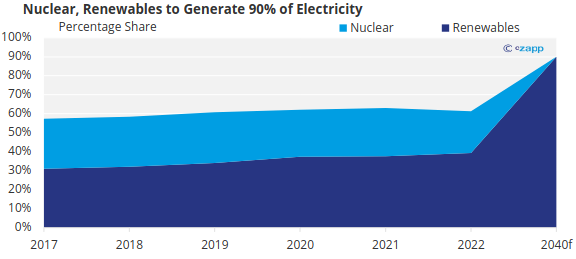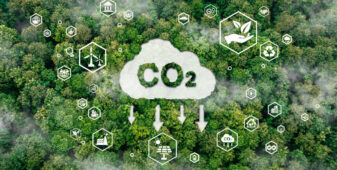Insight Focus
- A draft proposal indicates that the EU is considering a 90% net emissions reduction target.
- For the first time, this would include some scope for carbon removals.
- The plan aims for coal use to be phased out completely by 2040.
EU Could Propose 90% Net Emissions Reduction
The European Commission is expected in the next fortnight to propose a 90% net emission reduction target from 1990 levels by 2040, marking the last significant waypoint to its goal of achieving net zero emissions by the middle of the century.
A leaked draft of the Commission’s proposal shows that regulators considered three alternative targets for 2040: 80%, 85-90% and 90-95%.
The third option “is the only option that corresponds to the advice of the European Scientific Advisory Board on Climate Change, minimises the total greenhouse gas emissions we put into the atmosphere, and is in line with the provisions of European Climate Law,” the draft stated.
Draft Makes Room for Carbon Removals
The EU’s current near-term target is a 55% economy-wide reduction from 1990 levels by 2030.
Previous EU-wide climate targets have been correlated to targets set for the EU Emissions Trading System. For example, the EU’s 55% economy-wide targets for 2030 involves a 62% reduction from sectors covered by the EU ETS. This suggests that the EU ETS will face a reduction target of more than 90% for 2040, and some of this target is likely to be met by carbon removals.

The draft document suggests that the EU’s 2040 goal will include for the first time some room for carbon removals, in addition to the policies such as renewable energy and energy efficiency, that have previously made up the bulk of the bloc’s climate policies.
The inclusion of carbon removals means that some emissions may be “offset” by removing greenhouse gases from the atmosphere using new technologies such as carbon capture and storage or direct air capture, as well as older methods including forestry and agriculture.
Carbon capture technologies are still in their relative infancy and the EU has begun work on how to certify and account for emissions removed from the atmosphere and stored either through technological means or through nature-based solutions.
The draft document does not give precise figures as to how much carbon reduction and carbon removals will form its 2040 target. These will be filled in by the Commission before the draft is published as an official proposal and will be subject to political negotiation among the member states and European Parliament.
Electrification Key to Plan
A significant part of the 90% target will come from a massive shift to electrification. The draft suggests that the 2040 goal will trigger an increase in electricity’s share of final energy consumption from 25% today to 50% in 16 years’ time. “Renewable energy, complemented by nuclear energy, will generate over 90% of the electricity consumption in the EU in 2040,” the Commission draft said.

Source: Eurostat
This shift to electricity would entail an 80% cut in the use of fossil fuels, with coal being phased out entirely. About 60% of oil use would come from the transportation sector, while natural gas would continue to fuel buildings, industry and the power sector. However, policies would require “any remaining fossil fuel combustion to be coupled as soon as possible with carbon capture and storage.”
These cutbacks on fossil fuel use could save the EU as much as EUR 2.8 trillion (USD 3 trillion) between 2031 and 2050 and save around EUR 1 trillion a year in healthcare costs attributed to the impact of fossil fuel pollution and emissions, the Commission document asserts.
The Commission is due to present its proposal for the 2040 target on February 6.






